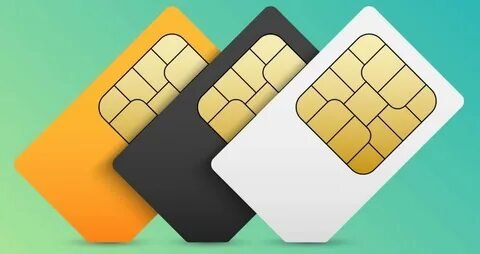A subscriber identity module card, commonly known as a SIM card, sits inside your mobile device like a digital ID. It securely stores your mobile subscriber identity (IMSI) and authentication credentials. This lets you connect to the mobile network and keeps your data safe—a tiny but powerful chip that keeps you in touch with the world.
Why It Matters: Role of the SIM Card in Mobile Network Authentication
A SIM card is essential for connecting to the mobile network. It proves who you are using your IMSI and an authentication key. If the network recognizes these, it gives your device access—otherwise, no connection. This system ensures only authorized users can use the network, keeping everything secure. That’s why the SIM card is often referred to as the “key to the network.”
Built on GSM Technology: A Brief History
SIM cards originated with GSM technology, the global standard for mobile telephony. The first SIM cards appeared in 1991; they were large—like credit cards. Over time, they shrank as phones became smaller. Now, GSM underlies most mobile networks worldwide, and the SIM card remains a key part of authentication and identity verification.
Inside the Card: What Is an Integrated Circuit Card?
Technically, the SIM card is an integrated circuit card (ICC)—sometimes called a UICC when embedded with multiple applications. But people still call the plastic chip a “SIM card” even when it’s not just that tiny IC. This ICC holds your IMSI, ICCID, authentication keys, and sometimes temporary network info like the local cell tower list.
Key Data Elements: IMSI, ICCID, PIN & More
Here’s what a SIM card typically stores:
- IMSI (International Mobile Subscriber Identity): Your permanent network ID.
- ICCID (Integrated Circuit Card Identifier): A unique serial on the card itself.
- Ki (authentication key): Secret network key that helps authenticate your device.
- Network data: Temporary details that help your device stay connected.
- Security locks: PIN and PUK protect against unauthorized use.
SIM Formats: Standard, Micro, Nano, eSIM, iSIM
SIM cards have evolved in both form and function:
- Standard/Mini SIM (1FF/2FF): Early, large cards.
- Micro SIM (3FF): Smaller version for slimmer phones.
- Nano SIM (4FF): The current physical standard.
- eSIM: A programmable SIM embedded in the device, no physical card needed.
- iSIM: Builds the SIM directly into the device processor—ideal for tiny IoT devices.
How a SIM Works: From Power-On to Connection
When you power on your phone:
- The device reads the IMSI from the SIM.
- It sends that to the network.
- Network sends a random challenge.
- SIM signs the challenge using its secret key (Ki).
- If the response is valid, the network gives access.
SIM Application Toolkit: Hidden Power in Your SIM
Beyond storing data, SIMs can run programs via the SIM Application Toolkit (STK). It allows the SIM to launch menus, send prompts, or update itself—often used for mobile banking or operator services.
Why SIM Cards Still Matter in an eSIM World
Even with new tech like eSIM and iSIM, traditional SIM cards still play a vital role:
- Portability: You can move your SIM to another device.
- Fallback: In areas where eSIM isn’t supported.
- Simplicity: Swapping SIMs is an easy way to switch carriers or phones.
Conclusion
A subscriber identity module card, or SIM card, is a small but essential component of mobile devices. It stores your mobile identity (IMSI) and connects you securely to GSM networks. Across formats—Standard, Micro, Nano, eSIM, iSIM—it remains at the heart of mobile authentication. Its integration as an integrated circuit card ensures security and versatility. As we move toward embedded SIM technologies, the SIM card’s legacy remains—offering identity, convenience, and control.
FAQs
1. What does “SIM” stand for?
SIM stands for Subscriber Identity Module. It refers to the component in a mobile device that stores identity and authentication data.
2. How does a SIM card work?
A SIM holds your IMSI and security key. It sends these to the network when you connect. If verified, you get access—and only then.
3. What’s the difference between IMSI and ICCID?
The IMSI is the subscriber’s network identity. The ICCID is the card’s own serial number, identifying the physical SIM.
4. What are eSIM and iSIM?
An eSIM is a virtual SIM built inside your device. An iSIM is built into the processor—no separate chip.
5. What is the SIM Application Toolkit (STK)?
STK is a small program on the SIM that interacts with your phone to offer services like menus, banking, or network updates.

